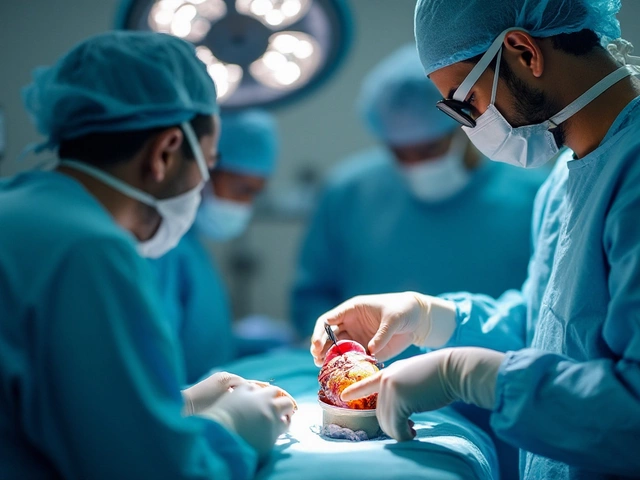Bone Surgery: What You Need to Know
Got a bone problem and wondering what surgery really involves? You’re not alone. From a cracked femur to a stubborn knee‑on‑bone issue, Indian hospitals offer many ways to fix bones and get you moving again. Let’s break down the most common surgeries, the recovery road‑map, and the questions you’ll likely ask.
Common Bone Surgery Procedures
Fracture fixation – When a bone breaks badly, surgeons clean the fragments and secure them with plates, screws or rods. The goal is to let the bone knit back together while you stay as active as possible. Most patients leave the OR the same day and start gentle motion a few days later.
Knee replacement (total knee arthroplasty) – If cartilage wear leaves you with ‘bone‑on‑bone’ pain, a knee implant can replace the worn surfaces. Indian centers often use cemented or cement‑less options, and the surgery lasts about 1‑2 hours. Expect a hospital stay of 3‑5 days, then a rehab plan that starts within a week.
Hip replacement – Similar to the knee, a damaged hip joint can be swapped for a metal‑on‑plastic or ceramic‑on‑ceramic prosthesis. The procedure is common in India’s metro hospitals and usually follows a fast‑track protocol: you’ll be up and walking the day after surgery.
Spinal fusion – For severe disc problems or vertebral fractures, surgeons may join two or more vertebrae using bone grafts and metal cages. The aim is to stop painful movement and give the spine stability. Recovery can take 3‑4 months, but most patients feel relief much sooner.
Hyoid bone surgery – Though rare, the hyoid (the bone in your throat) can be injured in accidents. Surgery here is delicate because the bone never fully remodels on its own. Specialists use tiny plates to secure it, and you’ll need a soft‑food diet for a few weeks.
Recovery Tips and FAQs
First off, listen to your surgeon’s timeline. Most bone surgeries have a phased recovery:
- Phase 1 (0‑2 weeks): Pain control, gentle mobility, and keeping incisions clean.
- Phase 2 (2‑6 weeks): Physical therapy begins. Simple strength exercises protect the new bone or implant.
- Phase 3 (6‑12 weeks): You’ll start more demanding activities like climbing stairs or light jogging, depending on the procedure.
Nutrition matters. Calcium‑rich foods, vitamin D, and protein help bone repair. If you’re on a vegetarian diet, think paneer, almonds, soy and fortified milks.
Don’t skip follow‑up visits. Doctors check X‑rays to make sure the bone is healing right and adjust rehab if needed. Missing an appointment can delay spotting complications like infection or implant loosening.
Common worries:
- Will I be in pain forever? Most pain fades within a few months. If it spikes after that, call your surgeon.
- Can I travel after surgery? A short domestic flight is usually fine after 2 weeks, but long trips should wait until you’ve cleared the rehab milestones.
- What about cost? Prices vary by city and hospital. Government hospitals often subsidize implants, while private centers may offer package deals that include physiotherapy.
Bottom line: bone surgery in India blends modern techniques with affordable care. Knowing the procedure, sticking to rehab, and eating right give you the best shot at a smooth recovery. If you’ve got more questions, chat with an orthopedic specialist—you’ll feel more confident before you even step into the OT.





